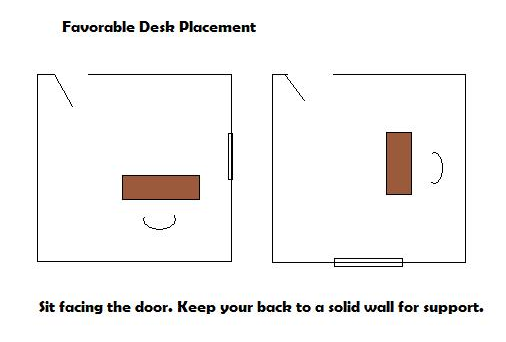Now that Covid-19 has forced the experiment, Global Workplace Analytics estimates that 25-30% of the workforce will be working from home (WFH) multiple days a week by the end of 2021. The current number is less than 4% – whoa! In another survey released by the business publishing company getAbstract, nearly 43% of full-time American employees say they want to work remotely more often even after the economy has reopened. That’s a huge number of people whose home has suddenly become a place not just for rest, play and nourishment but for productivity and revenue generation!
With that new spin on home life, to be productive there is top of mind for many. A google search will give you tons of tips. A quick summary looks like this:
- Get ready for the day and out of your pj’s!
- Take some time to leave the “office” – go outside, get a coffee, take a walk, etc.
- Set and stick to a schedule, including breaks.
- Don’t eat crappy food – eat healthy for energy and mental balance.
- Set routines, especially in the morning and end of day
And of course,
- Designate a productive uncluttered work space
From my experience in hundreds of homes, I expect this last tip is not so easily accomplished. This is where I’ll focus in this 3-part series dedicated to creating your productive workspace zone, or zones. Notice also that the word “uncluttered” is not where I will focus since most of my blog writing is about getting uncluttered. You will find a plethora of insight throughout this blog, including a recent post on Getting Started.
Location, Location!
Choosing a location to designate as your work zone at home is très important. First, consider the basic occupational needs for your WFH space. For most, the “equipment” needed is simply a laptop, your phone and maybe a minor amount of paper. If this is you, you can be mobile and you may need or benefit from more than one workspace area in the household.
For some, you have a designated home office space to use. In my experience, unless the office is already used regularly as a WFH space, it may have become a clutter center. Many home offices are often a one-off place in the household. A back room. The sorta closet hallway. The office can be what I call the “slash room”, meaning office / guestroom / gifting room / storage room.. you get the idea. Because it serves multiple purposes, there is often a clutter issue. Some organizing may be necessary since an uncluttered space is important for any area you choose.
My friend Mark is now working from home. Most of what his occupation requires is writing (phone, headset, laptop computer, power) and and occasional phone or video meeting (phone, uncluttered background for the video, quiet). Mark also has two children who are schooled at home for now. Fortunately, his spouse (my bestie!) manages the kids and schooling (brilliantly!), so he doesn’t have to work that into his day, but he has to consider ambiance and audio. While ha hasn’t a home office, he has 3 work zones in his home. A chair in the living room, where he is very productive and gets most of his intense work done; the front porch, where he takes “meetings” because it’s quiet, offers good lighting and a nice background; and a space on the front lawn, where he often writes but mostly takes calls or gets his creative juices flowing outside. Mark has intuitively found a power center for the harder or time intensive work. Alternatively, my retired-yet-busy girlfriend Gail and her husband Barny both WFH on endeavors. They have no “office” in their home. He created a desk space in the living room, and she is not far away in her own space at the kitchen island. Their needs are simple.
The Command Position
In the world of Fend Shui, there is something called the “command position” which identifies the features of the space in a room where you can be most productive. The essence of this feng shui position is not about commanding others but rather about being the commander of your own energy so you do your best in any situation. Most feng shui is simply intuition and logic. Remember Mark productively writing in his chair in the Living Room? Not surprisingly, the chair is in the command position in that room. When he sits in that chair he can see the entire room including 3 doorways and 2 picture windows with beautiful outdoor views. Indeed, from that chair he can pretty much know what is going on in almost every area of the main floor of his household. He didn’t know that when he chose it, but indeed it explains why he is most productive in that space, with a solid wall behind him, gorgeous scenery and a view of his home ship.
 In any room, the command position is the spot that is furthest from the door and not in the direct line with it. A good location is diagonally from the door and facing the door. (See diagram) You want to have a solid wall behind you, not a window or door. The view from your workspace should be a pleasant one with the ability to span the room visually.
In any room, the command position is the spot that is furthest from the door and not in the direct line with it. A good location is diagonally from the door and facing the door. (See diagram) You want to have a solid wall behind you, not a window or door. The view from your workspace should be a pleasant one with the ability to span the room visually.
You may not need all of your work zones to be in a command position, but for the work that is intense, requires a great deal of concentration or that is challenging for you, sitting in the powerful command position is essential. Try different locations in your space to determine what feels best.
 If you have a home office, where you desk sits is critical. Unfortunately, many desks, especially built-ins, face the wall. When you have the choice, turning the desk perpendicular to or opposite the wall may be all it takes. Use a tall plant, pedestal or art piece to hide the cords.
If you have a home office, where you desk sits is critical. Unfortunately, many desks, especially built-ins, face the wall. When you have the choice, turning the desk perpendicular to or opposite the wall may be all it takes. Use a tall plant, pedestal or art piece to hide the cords.
In this photo, the couch is the command position in the room. When you sit there, you have a view of everything and a solid wall behind you.
Working from home is effective for Mark because he has at least one space in the “command” or “power” position and his productivity is high when he works there. For Gail and Barny, neither of their WFH locations is in the command position. But while Gail and Barny still do purposeful life work, little of it is challenging, critical or requires deep concentration. For them, having a work zone in a power position is not important. 
In the home office pictured, the desk is turned on a diagonal in order to maximize the power position, facing the door. (Source: Check out this article and scroll down – it’s lengthy but chock full of tips on maximizing the energy and productivity of you space with feng shui,)
So consider your workspace zones. And by the way, I stray a bit from the popular wisdom. Most experts say “designate a workspace”. I say, for your health, designate at least one space to be your work zone; two or more if possible. Mark has multiple spaces to work. Therefore, in addition to serving his different work modes, he can get up and move when his body gets worn sitting in one position. That’s good ergonomics. More on that in Part 2 of this series.
Tell me your work zone challenge or send me a photo. And check out my Pinterest page for more visuals on the Command position.